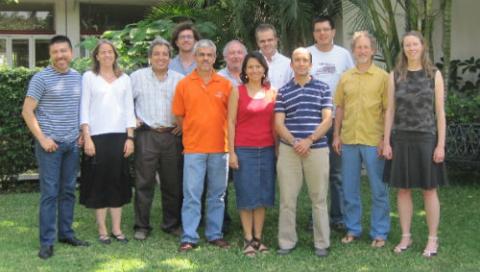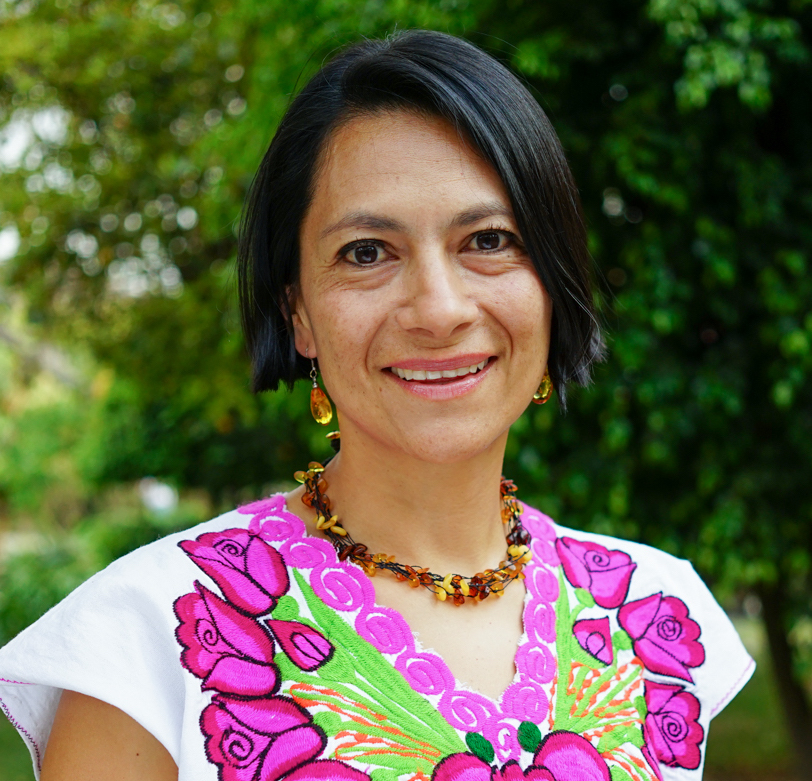By Astrid Puentes Riaño, AIDA Co-Director , @astridpuentes
November 1 marks my 10th anniversary working with AIDA! It’s been a decade since the board of directors, meeting in Anton’s Valley, Panama, decided to hire me. I was thrilled with the offer: when I was a law student in Colombia and an assistant with the NGO Fundepúblico, I had participated in the founding of AIDA and in setting up its first meeting, in 1998.
Over the past decade, I have had the great fortune to meet wonderful people and to visit extraordinary places in Latin America— Cordoba in Argentina, Altamira in Brazil, Los Altos de Jalisco and La Parota in Mexico, La Oroya and Iquitos in Peru. Today, as I celebrate and renew my commitment to keep learning and giving my best to AIDA, I am grateful to be able to provide a positive contribution to the region. AIDA was and is my dream job!
A big challenge from the beginning
When the AIDA board appointed me, it was more for the potential they saw than for my experience. I did my best, contributing my energy and passion to the expansion of environmental law and to promoting an understanding of the link between human rights and the environment, all while raising a family. Ten years later, and thanks to this incredible opportunity, I can say that I have made some mistakes, learned, grown immensely, and come to understand the sometimes-harsh reality of our environment in Latin America. It seems that the board of directors is happy with the results, because I’m still here!
How much we have grown!
When I started, AIDA was just Anna Cederstav (co-executive director) and me, working with a budget of approximately U.S. $300,000, a small office within the Earthjustice headquarters in California, and four cases. We had many dreams for AIDA. The main goal was to make it a solid regional organization that works on emblematic legal cases, always giving highest priority to the people and communities in the most vulnerable situations, and with about ten lawyers in key countries who stand out for the quality of their work and effective collaboration. 
Today our team includes 11 attorneys, one scientist, and 10 administrative and communications professionals, based in seven countries. We work every day to promote greater protection and environmental justice and to encourage regional economic development that does not sacrifice our natural resources or our future.
Some milestones
I’ve been extremely pleased that we’ve helped to improve several areas and communities in the region. For example, we’ve helped achieve:
▪ Official recognition of the environmental and human health disaster in La Oroya, Peru, where the 70-plus people we represent have begun to receive some medical attention from the government;
▪ A significant decrease in the aerial spraying of coca and poppy plants in Colombian national parks;
▪ Protection of leatherback turtles and one of their last remaining nesting sites in Costa Rica;
▪ Increased awareness of the human rights violations suffered by thousands of indigenous people living near the Belo Monte hydroelectric dam in Brazil;
▪ Suspension of a mega-tourism project in Baja California Sur, Mexico that would destroy the Cabo Pulmo Coral Reef, known as the world’s aquarium;
▪ Amendments to the Mexican Constitution to include human rights protections and to improve the recognition of the human right to a healthy environment.
In addition, we have published a trilingual guide on how to apply human rights mechanisms to environmental cases; a report on the human rights impacts of climate change in Latin America; and a report on how large dams are not a panacea but instead are having a negative impact on millions of people in our region. We also have organized periodic workshops with our colleagues that emphasize the inseparable link between human rights and the environment.
The best aspect of my job over these years has been learning more about the region and every person I have met along the way. In 2004, for example, I took my first trip to La Oroya, where I met Pedro and Juan*, brothers both under 10 years old whom we represent before the Inter-American Commission on Human Rights. With high spirits, they attentively took part in our workshop aimed at protecting their rights, although they nearly fell asleep while eating their soup at lunchtime—one of the effects of lead poisoning. Now teenagers, they have begun their professional careers; Juan is serving in the military, and Pedro in the process of starting the university. Then there are Juanita and Margarita*, who were not yet born in 2004. I got to know the girls during later trips to La Oroya; when I first met them they arrived with their mothers, wrapped in slings. Now they are nearly teenagers and we have developed warm personal relationships that go beyond our legal work with them and with many others.
Not everything has been rosy
It hasn’t all been happiness and celebration. Over the past 10 years I have sadly witnessed:
▪ Construction of the Baba hydroelectric dam in Ecuador, despite a Constitutional Court ruling that ordered review of the environmental assessment because the project violated constitutional and international laws;
▪ Construction of El Zapotillo Dam in Los Altos de Jalisco, Mexico, although it seems for now that Temaca, a town that authorities had planned to flood, won’t be destroyed;
▪ Start of construction of the huge Belo Monte dam in Brazil, in defiance of the precautionary measures issued by the Inter-American Commission on Human Rights;
▪ Exponential growth in mining projects, including in the Colombian páramos—unique high-altitude ecosystems that provide fresh water for much of the population.
What comes next
If I weigh the good and the bad, the overall balance is positive. For now, a great part of our dream has become a reality. But just as today’s challenges have become greater, so has my commitment to see through our goals for the region.
I extend my sincere thanks to the AIDA board and to Anna, my co-director, as well as to our great team and everyone who has collaborated with AIDA in the past. And I thank my family, friends and our donors, including the foundations and friends who have each managed to donate something, no matter how large or small. Thank you for your generosity and for helping us to fulfill our dreams and change the world together.
All of the successes and challenges make the gray hair and wrinkles worth it. I’m ready for many more years at AIDA, as long as I continue to be an effective agent of its success!
*Names have been changed to protect the identities of the people mentioned.
Astrid Puentes

Astrid Puentes Riaño was one of the two Co-Executive Directors of AIDA (2003-2021). She was responsible for AIDA’s legal efforts and organizational management. Originally from Colombia, Astrid has significant experience linking environmental protection with human rights, and climate change, highlighting the importance to prioritize climate justice. For over twenty years she has been working on public interest litigation, especially in the field of human rights, the environment, and climate change. Astrid holds an LL.M. in Comparative Law from the University of Florida, a Masters in Environmental Law from the University of the Basque Country, and a J.D. from the Universidad de Los Andes, Colombia. Astrid has also taught several seminars and classes on human rights, the environment and climate change, including at American University Law School in Washington, and the Universidad Nacional Autónoma de México (UNAM).
